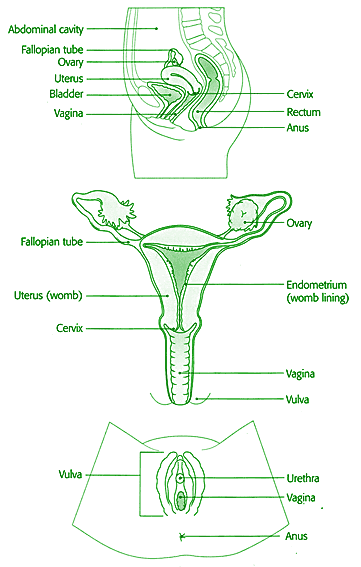|
The female genital tract
• The female genital tract includes the vulva, vagina, cervix,
uterus, Fallopian tubes and ovaries.
• The vulva is the area surrounding the openings
of the vagina and urethra. It includes the clitoris.
• The vagina is a muscular tube that runs from the vulva to the
cervix.
• The cervix, which is sometimes called the neck of the womb, is
quite firm and lies at the bottom of the uterus. During labour, it softens
and then opens to allow the baby to be born.
• The uterus is a muscular organ, usually about the size of a pear,
that sits in the pelvis. It is here that the fetus develops during pregnancy.
The lining of the uterus is called the endometrium. This thickens during
the menstrual cycle in preparation for a fertilized egg, and is shed
during menstruation if the egg is not fertilized.
• The two ovaries sit on either side of the uterus. As well as
producing eggs, they produce the female hormones, oestrogen and progesterone,
until the menopause occurs.
• The Fallopian tubes connect the uterus to the ovaries. When an
egg is released from one of the ovaries, it is collected by the Fallopian
tube. Once in the tube, it may be fertilized by a sperm that has swum
up from the vagina though the cervix and uterus.
|
|
 |




